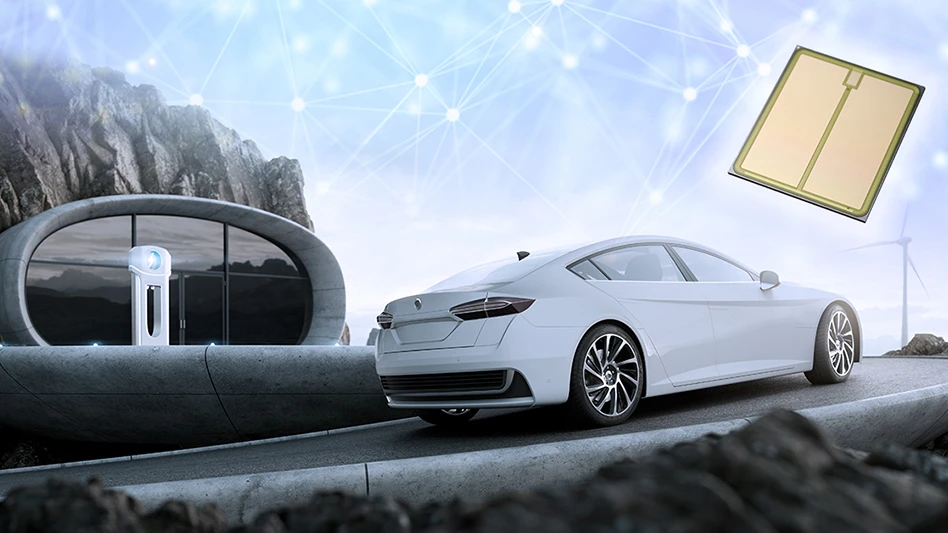
CREDIT: TOSHIBA ELECTRONIC DEVICES AND STORAGE CORPORATION
Toshiba Electronic Devices & Storage Corporation has developed X5M007E120, a bare die 1200V silicon carbide (SiC) MOSFET for automotive traction inverters with an innovative structure that delivers both low on-resistance and high reliability. Test samples are now shipping for evaluation by customers.
The reliability of typical SiC MOSFETs is degraded by increased on-resistance when its body diodes are bipolar energized during reverse conduction operation. Toshiba SiC MOSFETs alleviate this issue by a device structure that embeds Schottky barrier diodes (SBDs) into the MOSFET to inactivate body diodes, but positioning the SBDs on the chip reduces the area available for channels determining the resistance of MOSFET on-operation and increasing the chip’s on-resistance.
The SBDs embedded in X5M007E120 are arrayed in a check pattern, not the typically used striped pattern, an arrangement that effectively suppresses bipolar energization of the device’s body diodes, while improving the upper limit of unipolar operation to approximately twice the current area, even when taking up the same SBDs mounting area. Channel density is also improved against the striped array, and on-resistance per unit area is low, reduced by approximately 20% to 30%. This improved performance and low on-resistance while maintaining reliability against reverse conduction operation will save energy in inverters used for motor control, such as automotive traction inverters.
Reducing on-resistance in an SiC MOSFET causes excess current flow through the MOSFET during short-circuit, reducing short-circuit durability. Enhancing the conduction of the embedded SBDs to improve the reliability of reverse conduction operation also increases current leakage during short-circuit, again decreasing short-circuit durability. The new bare die has a deep barrier structure that suppresses excessive current in the MOSFET and leakage current in SBDs during short circuit status, improving its durability while maintaining excellent reliability against reverse conduction operation.
Users can customize the bare die to meet their specific design needs and realize solutions for their applications.
Toshiba expects to provide engineering samples of X5M007E120 in 2025, and to start mass production in 2026. In the meantime, it will explore further improvement to device characteristics.
Toshiba will contribute to the realization of a decarbonized society by providing customers with easier to use, higher performance power semiconductors for fields where energy efficiency is essential, such as inverters for motor control and power control systems for electric vehicles.